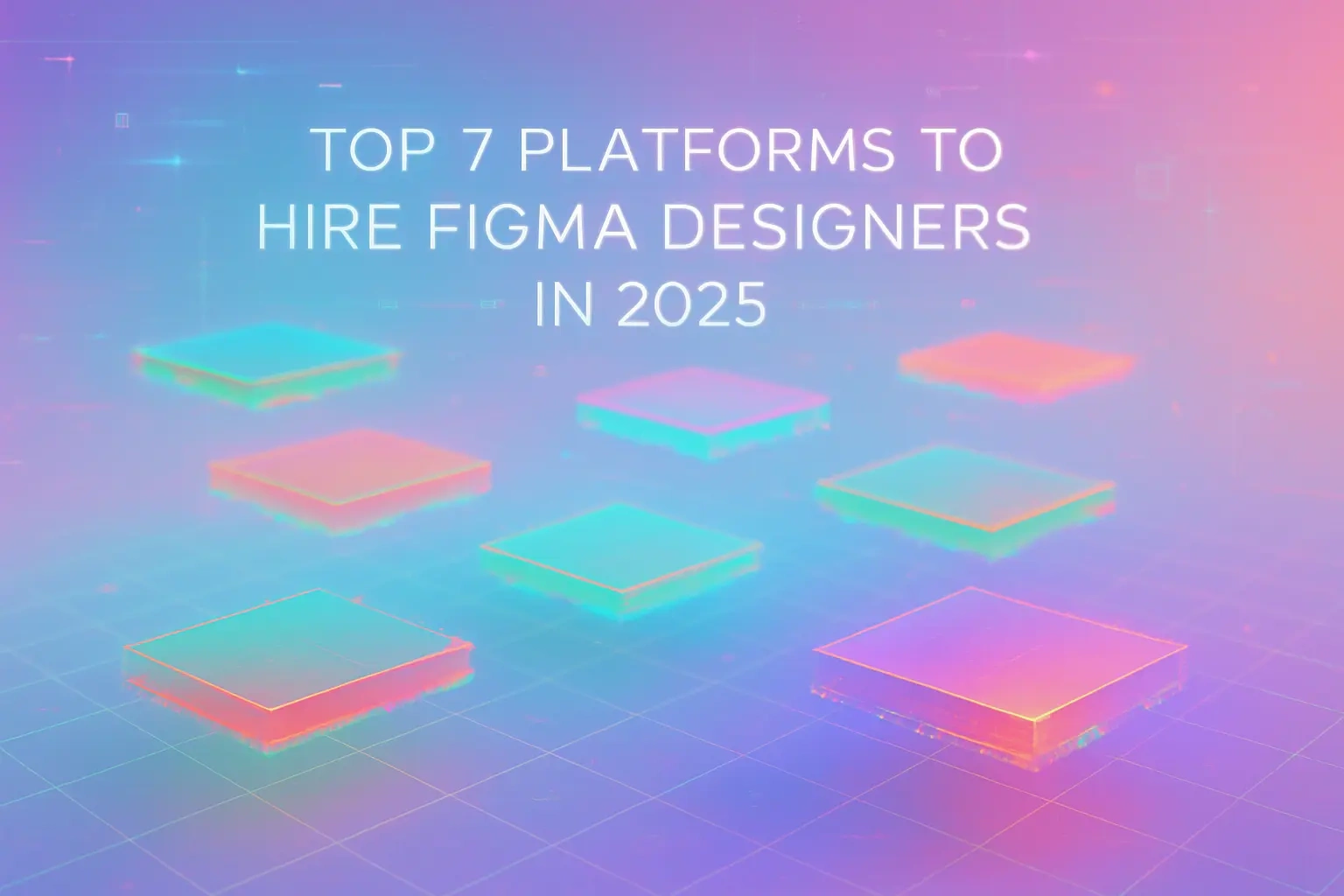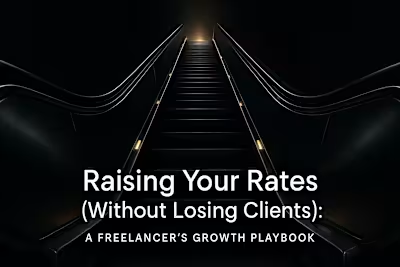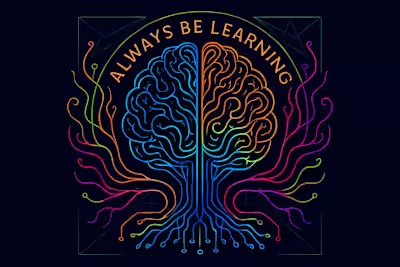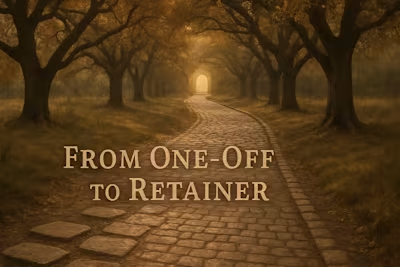Top 7 Platforms to Hire Figma Designers in 2025

Top 7 Platforms to Hire Figma Designers in 2025
What Defines a Great Hiring Platform for Figma Designers?
Quality and Vetting of Talent
Pricing and Engagement Models
1. Commission-Free Talent Marketplaces
2. Vetted-Only Networks
3. Professional Social Networks
4. Design-Specific Portfolio Platforms
5. Traditional Freelance Marketplaces
6. Niche Design Communities and Job Boards
7. How to Choose the Right Platform for You
References
Top 7 Platforms to Hire Figma Designers in 2025
Finding the right talent is crucial for the success of any design project. With Figma's dominance in the UI/UX world, knowing where to find skilled designers is a key business advantage. This article will break down the top platforms for hiring Figma experts, helping you choose the best fit for your needs. We'll also explore what to look for when you review a designer's work in our guide to analyzing a Figma portfolio.
Whether you're a startup building your first product or an established company refreshing your digital presence, the platform you choose to hire Figma experts can make or break your project. The right platform doesn't just connect you with designers—it streamlines the entire hiring process, from discovery to project completion.
What Defines a Great Hiring Platform for Figma Designers?
Before diving into specific platforms, it's important to establish the criteria for what makes a platform effective. Not all hiring platforms are created equal, and understanding these differences can save you time, money, and headaches down the road.
The best platforms balance several key factors. They offer access to talented designers while providing tools that make hiring, collaborating, and paying simple. Let's break down what really matters when choosing where to find your next Figma designer.
Quality and Vetting of Talent
The most critical factor in any hiring platform is the quality of talent available. You want designers who not only know their way around Figma but can also solve real business problems through design.
Top platforms implement various vetting processes to ensure quality. Some require portfolio reviews where designers must demonstrate their Figma expertise through real projects. Others go further with technical assessments, testing designers on specific Figma features like auto-layout, component systems, or prototyping capabilities.
The best vetting processes also evaluate soft skills. Can the designer communicate effectively? Do they understand project requirements? Have they worked with clients similar to you? These factors often matter as much as technical ability.
Look for platforms that clearly explain their vetting process. If a platform accepts everyone who signs up, you'll spend more time sorting through unqualified candidates. On the flip side, platforms with rigorous screening save you time by pre-filtering talent.
Pricing and Engagement Models
Different projects need different payment structures, and the right platform should offer flexibility. Understanding these models helps you budget effectively and find designers who align with your project scope.
Hourly rates work well for ongoing projects or when scope isn't clearly defined. You pay for the time invested, which gives flexibility but requires trust and good time tracking. Most platforms show hourly rates upfront, ranging from $25 for newer designers to $150+ for senior specialists.
Fixed-price projects suit well-defined work with clear deliverables. You know the cost upfront, making budgeting easier. This model works great for specific tasks like "design a landing page" or "create a mobile app prototype."
Retainers are perfect for long-term relationships. You secure a designer's availability for a set number of hours per month. This model builds consistency and ensures you have design support when needed.
Commission structures also matter. Traditional platforms often take 20-30% of what you pay, meaning designers receive less and may charge more to compensate. Commission-free platforms let designers keep their full rate, often resulting in better value for both parties.
1. Commission-Free Talent Marketplaces
Modern commission-free marketplaces represent a shift in how creative talent connects with clients. These platforms eliminate the middleman fees that traditional marketplaces charge, creating a win-win situation.
When you pay a designer $100 on a commission-free platform, they receive the full $100. This transparency builds trust and often means you get better value—designers don't need to inflate their rates to cover platform fees.
These marketplaces typically offer integrated tools for the entire project lifecycle. You can browse portfolios, message designers directly, manage projects, and process payments all in one place. No jumping between different tools or managing multiple subscriptions.
Direct communication is another huge advantage. You're not messaging through a platform representative or dealing with communication delays. You talk directly with your designer, ask questions, and get immediate responses. This speeds up the hiring process and helps build better working relationships.
Many commission-free platforms also focus on community and professional development. Designers on these platforms often engage in knowledge sharing, stay updated with latest Figma features, and maintain higher standards of work.
The project management features typically include milestone tracking, file sharing, and revision management. Some even offer contract templates and invoicing tools, making the administrative side of hiring much simpler.
2. Vetted-Only Networks
Exclusive networks that accept only a small percentage of applicants offer a different value proposition. These platforms are known for providing elite, senior-level talent, making them ideal for complex, high-stakes projects.
The screening process for these networks is intense. Designers typically go through multiple rounds of evaluation, including portfolio reviews, live design challenges, and client communication assessments. Only the top performers make it through.
This rigorous vetting means you're guaranteed a certain quality level. Every designer has proven expertise not just in Figma, but in solving complex design problems. They understand business goals, user research, and how design impacts bottom lines.
The trade-off is usually higher rates and less availability. These designers command premium prices because they deliver premium results. They're often booked weeks or months in advance, so last-minute projects might be challenging.
These platforms work best for companies with substantial budgets and complex projects. If you're redesigning a major product, launching a new brand, or need strategic design leadership, the investment in top-tier talent pays off.
Many vetted networks also offer additional services like project matching and dedicated account management. They'll help you define your needs, suggest appropriate designers, and even facilitate initial conversations.
3. Professional Social Networks
Platforms like LinkedIn have evolved into powerful recruitment tools for finding Figma designers. While not specifically built for hiring, their massive user base and professional focus create unique opportunities.
The key advantage is context. You can see a designer's entire professional history, not just their portfolio. Where have they worked? What projects have they completed? Who recommends them? This background information helps you make informed decisions.
LinkedIn's search functionality lets you filter by specific skills, location, experience level, and more. You can search for "Figma designer" and narrow results by years of experience, industry background, or even specific companies they've worked for.
The recommendation and endorsement features provide social proof. When multiple colleagues endorse someone's Figma skills or write detailed recommendations about their work, it adds credibility beyond what a portfolio alone can show.
Direct messaging capabilities let you reach out to passive candidates—talented designers who aren't actively looking but might be interested in the right opportunity. This expands your talent pool beyond those actively browsing job boards.
The challenge with professional networks is the extra work required. There's no built-in project management, payment processing, or formal hiring process. You'll need to handle contracts, payments, and project coordination through other tools.
4. Design-Specific Portfolio Platforms
Visual-first communities like Dribbble and Behance serve as showcases where designers display their best work. These platforms excel at helping you find designers whose aesthetic matches your vision.
The biggest advantage is the ability to browse work visually. You can quickly scan through hundreds of designs, save ones you like, and identify designers whose style resonates with your brand. It's like walking through an art gallery specifically curated for digital design.
These platforms often feature curated collections and trending work, helping you discover designers you might not find through traditional search. The community aspect means designers regularly update their portfolios with fresh work, giving you insight into their current skills and interests.
However, pretty pictures don't tell the whole story. A stunning portfolio doesn't guarantee the designer can handle your specific needs, work within constraints, or communicate effectively. You'll need to dig deeper through interviews and reference checks.
Many designers on these platforms aren't actively looking for work—they're showcasing for peer recognition or building their brand. Response rates might be lower than dedicated hiring platforms, and you'll need to sell them on your project.
The lack of built-in hiring tools means more manual work. You'll need to handle all communication, negotiation, contracts, and payments outside the platform. This extra effort can be worth it if you find the perfect designer, but it requires time investment.
5. Traditional Freelance Marketplaces
Large, established marketplaces have been connecting freelancers with clients for years. Their massive scale means you'll find designers at every skill level and price point, from beginners to seasoned professionals.
The sheer volume of available talent is both a blessing and a curse. You'll have plenty of options, but sorting through them takes time. Quality varies dramatically, and you'll need robust screening processes to find the right fit.
Bidding systems on these platforms can drive prices down, but remember—you often get what you pay for. The lowest bid rarely represents the best value. Focus on designers who demonstrate understanding of your project rather than those simply offering the cheapest rate.
Profile reviews and ratings provide some quality signals, but take them with a grain of salt. A five-star rating with three reviews means less than a 4.7-star rating with 50 reviews. Read the actual feedback to understand designers' strengths and weaknesses.
These platforms typically offer dispute resolution and escrow services, providing some protection if things go wrong. However, their size means support can be slow and impersonal when you need help.
Traditional marketplaces work well for simple, well-defined projects where budget is a primary concern. For complex work requiring deep Figma expertise or strategic thinking, you might spend more time searching than on specialized platforms.
6. Niche Design Communities and Job Boards
Smaller, focused communities often hide gems that larger platforms miss. These might be Slack groups, Discord servers, specialized job boards, or forums dedicated to specific design niches.
The advantage of these communities is passion and engagement. Designers here actively discuss trends, share knowledge, and help each other grow. They're often early adopters of new Figma features and passionate about their craft.
Finding these communities requires some detective work. Look for Figma-specific groups, local design communities, or industry-specific channels. Twitter, Reddit, and design blogs often mention these hidden resources.
The informal nature means more relationship building. You can't just post a job and wait for applications. Engage with the community, understand its culture, and build trust before seeking help. This investment often leads to better long-term relationships.
These communities excel at finding specialists. Need someone who specializes in Figma design systems? There's probably a community for that. Looking for designers who understand your specific industry? Check industry-specific design groups.
The downside is the lack of formal structure. No standardized profiles, no payment protection, no dispute resolution. You're essentially making informal arrangements, which requires more trust and clearer communication.
7. How to Choose the Right Platform for You
Selecting the right platform depends on your specific situation. There's no one-size-fits-all answer, but understanding your needs helps narrow the options.
Budget considerations: If budget is tight, traditional marketplaces offer the widest range of prices. For premium projects, vetted networks ensure quality. Commission-free platforms often provide the best value by eliminating middleman fees.
Timeline urgency: Need someone tomorrow? Large marketplaces and commission-free platforms typically have designers ready to start quickly. Vetted networks and passive recruiting through LinkedIn take longer but might yield better results.
Project complexity: Simple tasks work well on any platform. Complex, strategic projects benefit from vetted networks or experienced designers found through professional networks and portfolio sites.
Ongoing vs. one-time needs: If you need regular design support, invest time in platforms that facilitate long-term relationships. Commission-free marketplaces and professional networks excel here. For one-off projects, traditional marketplaces might suffice.
Industry expertise: Specialized communities and LinkedIn help find designers with specific industry experience. Generic platforms require more filtering to find relevant expertise.
Consider combining platforms for best results. Use portfolio sites to identify aesthetic fit, then verify skills through professional networks. Or start with commission-free platforms for most needs while maintaining relationships with vetted talent for critical projects.
The key is starting somewhere. Pick a platform that aligns with your immediate needs and experiment. As you gain experience hiring Figma designers, you'll develop preferences and strategies that work for your unique situation.
Remember, the platform is just the starting point. Success comes from clear communication, fair treatment, and building genuine partnerships with talented designers. The right platform simply makes that process easier and more efficient.
References
Like this project
Posted Jul 6, 2025
Discover the best platforms to hire talented Figma designers. We compare features, costs, and talent pools to help you make the right choice for your project.








